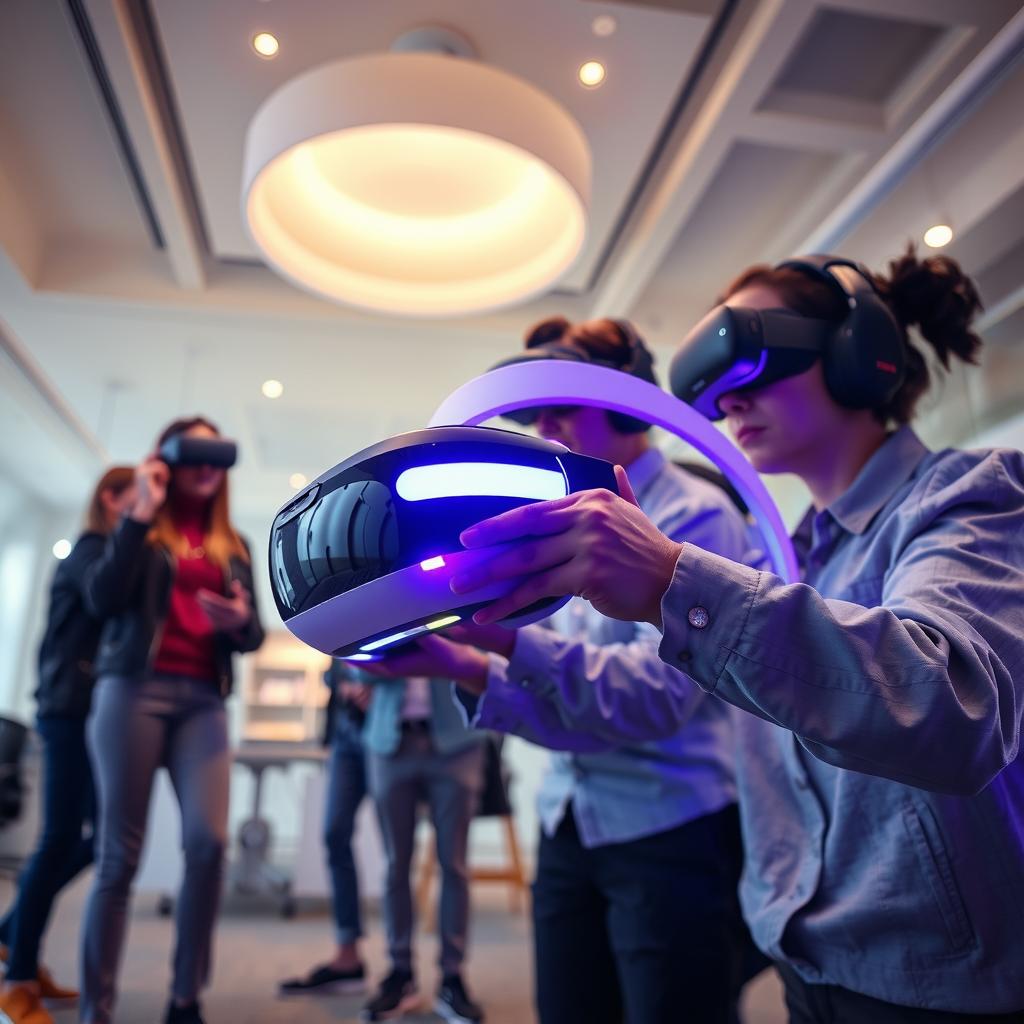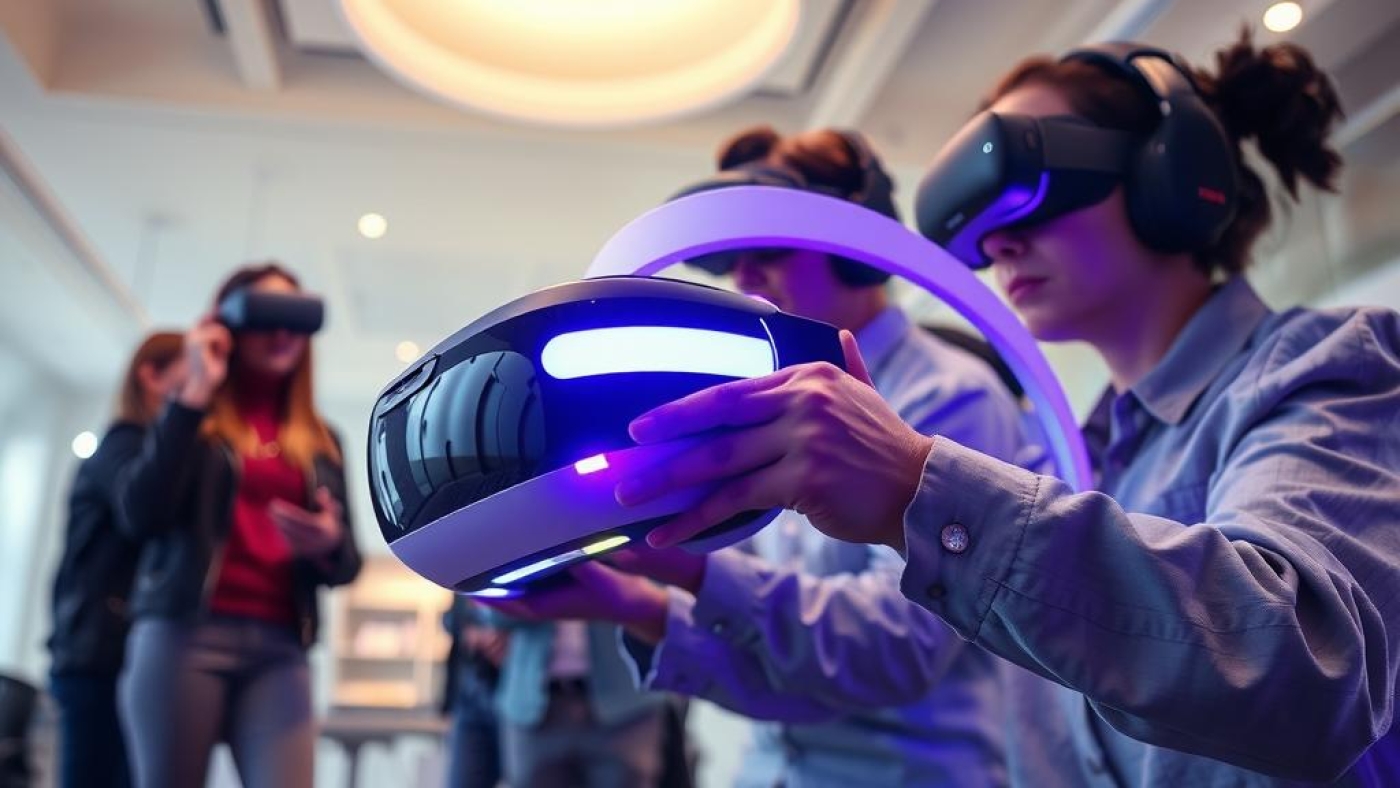In the rapidly evolving landscape of virtual reality (VR), businesses are increasingly recognizing the transformative power of Enterprise VR Haptic Devices. As organizations strive to enhance user experience through immersive training and effective virtual reality applications, selecting the right haptic technology has become more crucial than ever. With so many options available, it can be overwhelming for enterprises to pinpoint devices that deliver both tactile feedback and seamless integration into their existing systems. This selection guide aims to demystify the process, providing valuable insights into choosing Enterprise VR Haptic Devices that align with industry standards and specific business needs.
The core value of this guide lies in its ability to connect readers with essential knowledge about current trends in haptic technology. Whether an organization is looking to improve employee training simulations or engage customers in new ways, understanding device compatibility and performance metrics is key. The right choice not only enhances user experience but also ensures a robust return on investment as enterprises adopt cutting-edge solutions tailored to their unique requirements.
Moreover, as industries continue to leverage immersive experiences for various applications—from healthcare simulations to engineering design—having access to comprehensive information allows decision-makers to make informed choices. This article will explore factors such as usability, support services, and innovations within Enterprise VR Haptic Devices, guiding readers through a thoughtful evaluation process that addresses both technical specifications and practical considerations.
As we delve deeper into this selection guide for 2024, expect detailed analyses of leading products on the market today along with expert recommendations tailored specifically for enterprise environments. By arming themselves with this knowledge, organizations can confidently navigate the exciting world of haptic technology—a critical step toward embracing fully immersive experiences that redefine how they operate and interact within their fields.

Key Insights:
-
Importance of Device Compatibility: Ensuring seamless integration with existing systems is vital for maximizing the effectiveness of Enterprise VR Haptic Devices. Organizations must assess how these devices align with their current technological infrastructure to avoid potential operational disruptions.
-
Enhancing User Experience through Tactile Feedback: The use of advanced haptic technology significantly improves user engagement during immersive training sessions. By providing realistic tactile feedback, these devices help users better translate virtual experiences into practical applications in real-world scenarios.
-
Evaluating Industry Standards and Emerging Trends: Understanding industry standards is crucial when selecting the right VR devices for an organization’s needs. Additionally, keeping abreast of emerging trends in enterprise solutions allows companies to leverage innovative features that can enhance productivity and efficiency across various sectors.
Key Factors Influencing Haptic Technology Selection
Navigating the Essential Considerations for Enterprise Applications
When organizations consider integrating Enterprise VR Haptic Devices into their operations, several key factors must be meticulously evaluated to ensure a successful deployment. The first consideration revolves around the specific use case for which these devices are intended. For instance, if an organization aims to enhance its training programs through immersive experiences, it becomes crucial to select haptic technology that provides realistic tactile feedback and aligns with industry standards. Immersive training scenarios benefit significantly from high-fidelity simulations where users can interact physically with virtual elements; hence the quality of haptic feedback is paramount in achieving effective learning outcomes.
Another critical aspect involves assessing device compatibility across existing systems within the enterprise’s infrastructure. Businesses must ensure that their chosen VR devices can seamlessly integrate with current software applications and hardware setups without extensive modifications or increased costs. This compatibility facilitates smoother implementation processes and minimizes disruptions during transitions to new technologies. Moreover, as organizations scale their operations or adapt to evolving market demands, they need scalable solutions that allow for easy upgrades or additions of new functionalities without requiring complete overhauls.
User experience also plays a vital role in selecting appropriate haptic technology for enterprise solutions. It’s essential that employees feel comfortable and engaged while using Enterprise VR Haptic Devices, as this directly influences productivity and overall satisfaction levels during training sessions or collaborative tasks performed in virtual environments. A focus on ergonomic design features alongside intuitive controls will enhance user engagement while reducing potential discomfort associated with prolonged usage.
Furthermore, businesses should closely examine vendor support and community resources available for troubleshooting issues related to haptic technology implementation. Reliable customer service paired with comprehensive documentation can significantly reduce downtime when problems arise—ensuring teams continue benefiting from engaging virtual reality applications without significant interruptions in workflow.
Ultimately, understanding these fundamental considerations enables enterprises not only to choose suitable Enterprise VR Haptic Devices but also strategically align them with broader organizational goals aimed at improving operational efficiency through innovative technologies like immersive training simulations powered by advanced tactile feedback mechanisms.
Evaluating Compatibility in Haptic Technology
Understanding the Importance of Device Integration
When integrating Enterprise VR Haptic Devices into existing business systems, evaluating compatibility becomes crucial. The adoption of haptic technology can significantly enhance user experience through immersive training and interactive simulations. However, organizations must first assess how these devices will function alongside their current infrastructure. This involves understanding both hardware and software specifications to ensure seamless integration with existing virtual reality applications. Companies often face challenges due to varying industry standards that dictate device performance and compatibility; therefore, a thorough selection guide is essential for making informed decisions.
One primary consideration during evaluation is the type of tactile feedback provided by various haptic devices. Different industries may demand specific functionalities—such as precision in surgical simulations or realistic environmental interactions in engineering training—making it vital to match device capabilities with organizational needs. The Enterprise VR Haptic Devices, known for their advanced tactile feedback mechanisms, enable users to engage more deeply with virtual environments, creating an unparalleled sense of presence that traditional training methods cannot replicate.
Moreover, assessing integration capabilities requires examining potential barriers such as software compatibility issues or limitations posed by legacy systems within organizations. Ensuring that the selected Enterprise VR Haptic Devices can communicate effectively with other tools used in workflows allows businesses to leverage comprehensive solutions without disrupting operations. Organizations should also consider whether these devices support APIs (Application Programming Interfaces) that facilitate data exchange and improve overall functionality across platforms.
Ultimately, aligning haptic technology with business needs demands a proactive approach toward compatibility assessment and integration strategy planning. By prioritizing these evaluations early on in the decision-making process, companies can avoid costly mistakes related to mismatched technologies and maximize investment returns from their enterprise solutions.
Navigating Industry Standards
Aligning Business Needs With Technological Advances
Navigating industry standards while implementing Enterprise VR Haptic Devices poses another layer of complexity when evaluating device compatibility within business frameworks. Each sector has its own set protocols regarding safety regulations, ergonomic design requirements, and performance benchmarks which dictate not only usability but also compliance obligations when deploying new technologies like haptics for immersive training sessions or product demonstrations.
Organizations aiming for successful implementation must stay abreast of evolving standards governing haptic technology’s use across various applications—from healthcare simulations needing high fidelity touch sensations required during procedures—to industrial sectors where operators rely on precise feedback loops for machinery operations via virtual interfaces powered by cutting-edge VR devices designed specifically for enterprise settings.
Furthermore, keeping an eye on emerging trends around regulatory changes helps businesses anticipate necessary adaptations before launching products into market-ready phases involving extensive user testing scenarios using multiple types of VR devices integrated seamlessly with established operational protocols ensuring adherence not just at launch but throughout ongoing usage cycles post-deployment too thereby enhancing long-term sustainability strategies aimed at continuous improvement initiatives focused around user experience enhancement driven primarily through effective utilization options offered uniquely through state-of-the-art immersive tech advancements embodying characteristics exemplified best by top-tier manufacturers specializing exclusively within this niche segment offering high-quality outputs consistently meeting diverse customer expectations irrespective o f functional variances inherent between different operational contexts encountered regularly amidst daily activities performed broadly across industries today globally speaking!
Overall success hinges upon astute forecasting measures undertaken alongside critical assessments scrutinizing all aspects involved guaranteeing cohesive synchrony achieved mutually benefiting stakeholders engaged whilst driving innovation forward underpinning strategic pathways laid out towards achieving overarching goals envisioned collectively fostering growth opportunities expanding horizons leading ultimately towards enhanced profitability margins realized thanks largely attributed back down tightly woven threads connecting people processes technologies harmoniously together intertwining intricately shaping future landscapes ripe filled bustling activity awaiting discovery eagerly anticipated unfolding next chapter revealing beyond mere potentialities previously unimagined transforming realities experienced here now!
Emerging Trends in Immersive Training Solutions
Exploring the Future of Enterprise VR Technologies
As organizations increasingly seek innovative methods to enhance user engagement and operational efficiency, Enterprise VR Haptic Devices are at the forefront of this transformation. These cutting-edge technologies leverage virtual reality applications to create immersive training environments that not only captivate users but also improve retention and skill acquisition. With the integration of haptic technology, these devices provide tactile feedback that simulates real-world scenarios, allowing trainees to gain hands-on experience in a controlled setting. For instance, industries such as healthcare benefit immensely from this approach; medical professionals can practice complex procedures through lifelike simulations without any risk to patients or resources.
In addition to enhancing learning experiences, Enterprise VR Haptic Devices streamline operational processes by offering scalable solutions tailored for various enterprise needs. The adaptability of these devices ensures compatibility across different training modules while maintaining industry standards necessary for effective instruction. Organizations are now able to select from a wide range of immersive training options based on their specific requirements, which may include everything from safety drills in construction sites to customer service interactions in retail environments. This versatility helps businesses optimize their workforce’s performance and reduce costs associated with traditional training methods.
Moreover, user experience is significantly enhanced when employing Enterprise VR Haptic Devices, as participants become fully immersed in simulated tasks that mirror their job responsibilities closely. This level of engagement fosters deeper learning outcomes compared to conventional teaching techniques; employees often report feeling more prepared and confident after completing virtual reality-based training modules than they would following standard classroom sessions. As enterprises continue exploring new avenues for development within their teams, they will undoubtedly turn towards reliable selection guides for assessing device compatibility and functionality that best meet their goals.
The future holds immense promise for companies willing to invest in Enterprise VR Haptic Devices as part of their employee development strategies. By embracing these advanced technologies now, organizations position themselves ahead of competitors who have yet to recognize the advantages offered by immersive training solutions rooted firmly in haptic feedback capabilities—transforming how skills are taught across multiple sectors while ensuring an aligned focus on both user engagement and operational efficiency throughout all layers within the organization’s framework.
Frequently Asked Questions:
Q: What are Enterprise VR Haptic Devices and how do they enhance user experience?
A: Enterprise VR Haptic Devices are advanced tools that provide tactile feedback in virtual reality environments, allowing users to feel sensations as if they were interacting with real objects. This technology significantly enhances user experience by making immersive training programs more engaging and realistic, leading to better retention of skills.
Q: How can organizations ensure the compatibility of VR devices with their existing systems?
A: To ensure compatibility, organizations should refer to a comprehensive selection guide that outlines industry standards for Enterprise VR Haptic Devices. Evaluating device specifications against current systems is crucial; companies should consider factors such as software integration capabilities and hardware requirements before making a decision.
Q: What key features should businesses look for when selecting haptic technology?
A: When selecting haptic technology, businesses should prioritize features like responsiveness and tactile feedback mechanisms. These aspects are essential in delivering an effective immersive training experience through Enterprise VR Haptic Devices, enabling users to engage fully with virtual scenarios that closely mimic real-world situations.

Leave A Comment